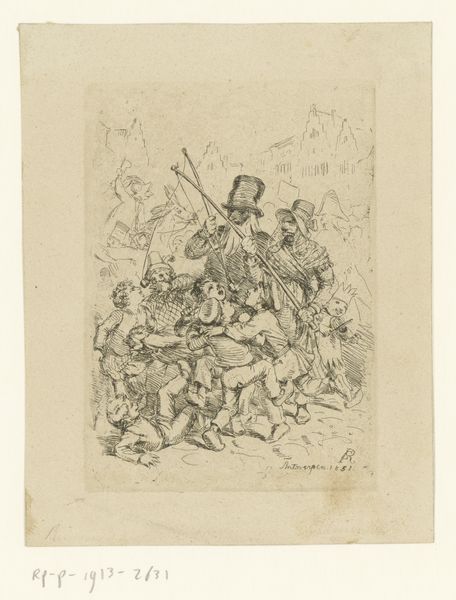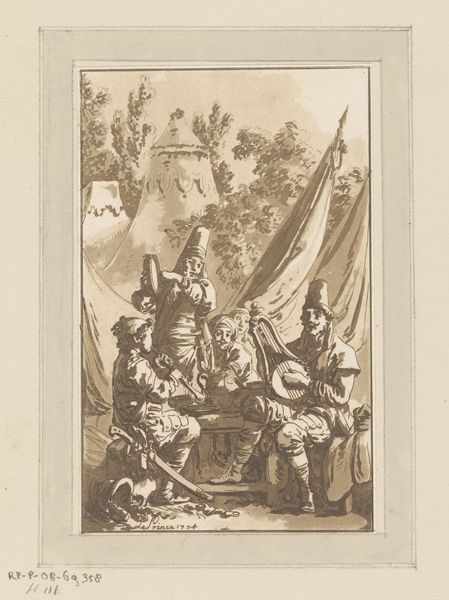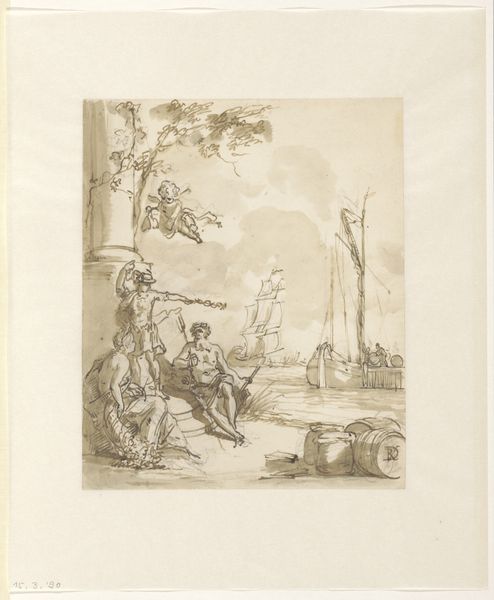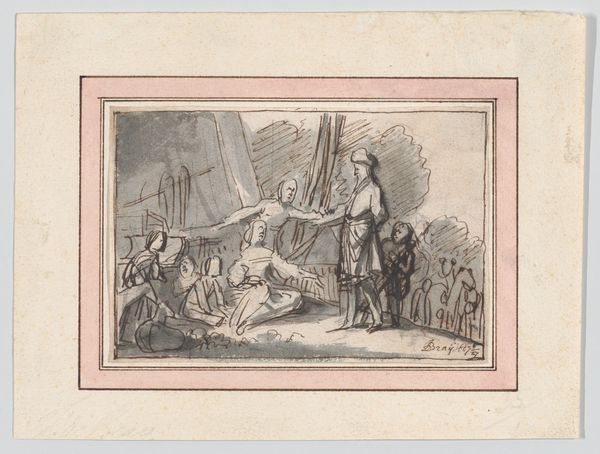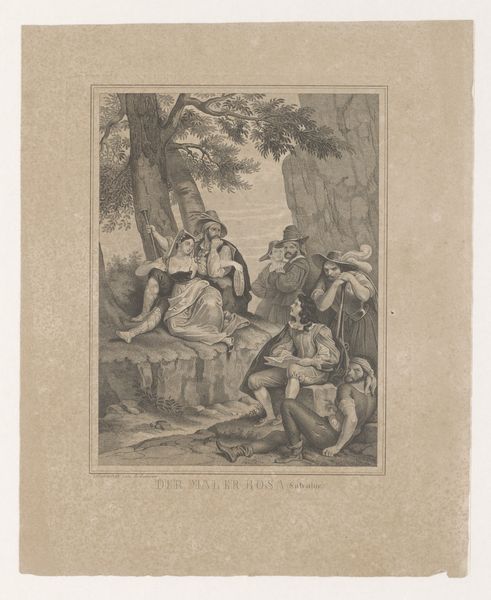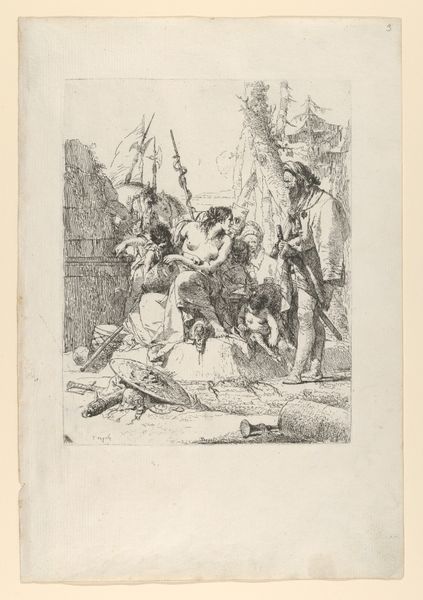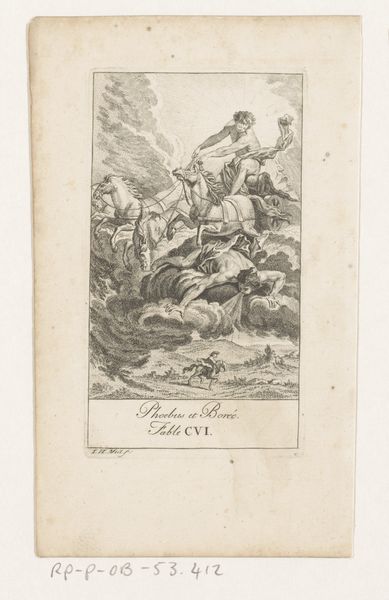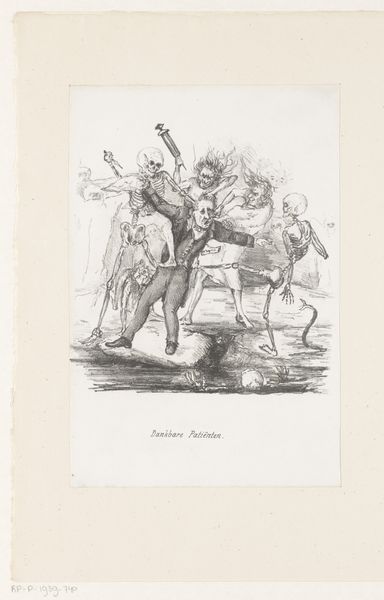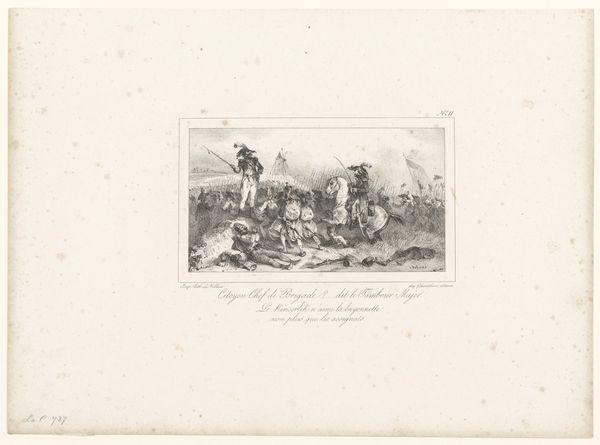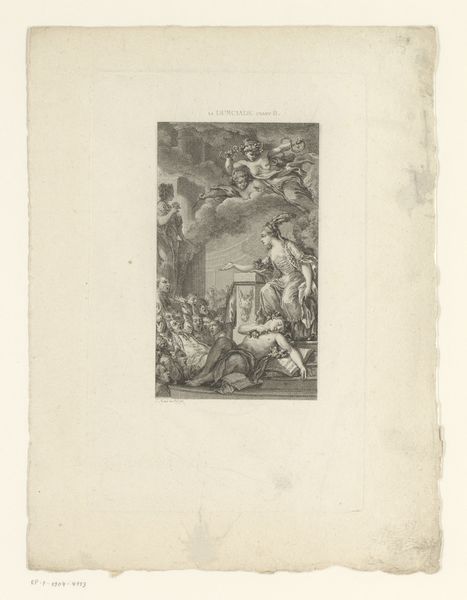
drawing, watercolor, pen
#
drawing
#
water colours
#
narrative-art
#
baroque
#
figuration
#
watercolor
#
pen
#
history-painting
#
mixed media
#
watercolor
Dimensions: height 208 mm, width 163 mm
Copyright: Rijks Museum: Open Domain
Curator: Let's discuss this engaging piece, "David en Abigaïl," attributed to Elias van Nijmegen and believed to have been created sometime between 1677 and 1755. Editor: It strikes me as quite dramatic, even in its muted watercolor palette. The composition is certainly theatrical, with a clear division between the two groups of figures. The lines are clean but feel hurried; almost gestural. Curator: Precisely! The piece captures a key moment from the Old Testament. Abigail, the wife of Nabal, is depicted intercepting David and his men with provisions, thereby preventing a potential conflict. This story highlights themes of diplomacy and intervention during periods of conflict. How the story became an inspirational image is a curious historical route of imagery that leads to its public role and symbolic interpretation in this rendition. Editor: Interesting, because to me, it brings the materiality of diplomacy to the forefront, you can see Abigail uses watermelons, flat bread and other provisions, turning potential violence to nourishment. The drawing gives a sense of what went into making the peace here. The rapid execution of lines using pen and watercolor indicates the urgency, suggesting a workshop practice oriented for quick assembly or perhaps instructional exercises, doesn't it? It challenges the grand narratives typical of history paintings with its subtle medium and more delicate touch. Curator: Perhaps. The swift style also speaks to shifts in art patronage at the time and to changing social ideas on the art process, particularly within Dutch art circles. The burgeoning merchant class demanded works that could convey complex moral tales succinctly. It seems to reflect that trend of public art values. Editor: So it becomes a crafted commodity? I see it! And the focus is not just on the event, but how material resources shift power. The art in itself reflects the socio-economics. Curator: Exactly. Nijmegen offers us more than a historical record; he gives us insight into how these narratives were used in shaping cultural and social viewpoints. Editor: Well, viewing "David en Abigaïl" with that lens enriches the work’s depth tremendously. It's a testament to how even seemingly simple material objects are packed with complex meanings.
Comments
No comments
Be the first to comment and join the conversation on the ultimate creative platform.
